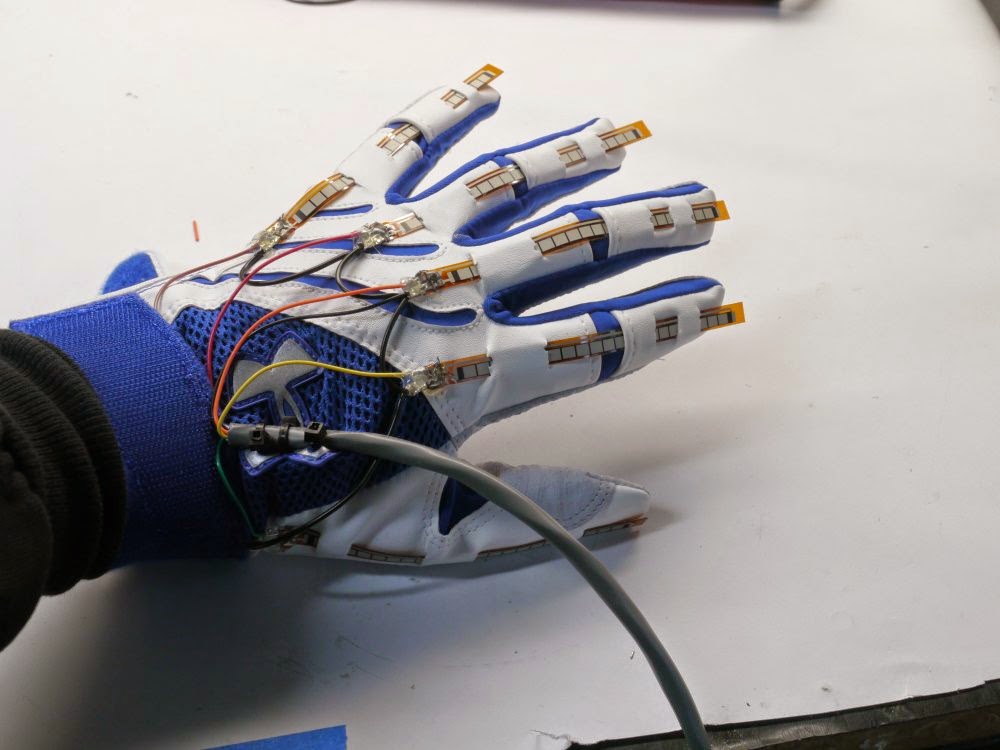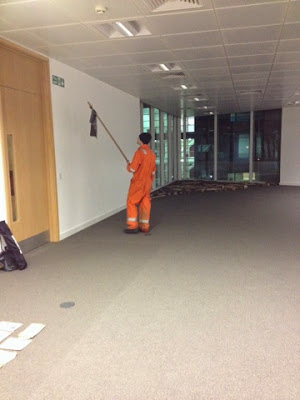Light sensor
Does exactly as the name suggests, depending on the level of light it is exposed to it will change various aspects of the sound like volume, pitch and speed depending what you set it to. We connected it to a speaker, using it as a volume control, when the light was on it was on at full volume, as the light dims, so does the volume of the sound connected to it. In darkness it is muted. I played with the idea of blacking out the room and controlling the light source through a lamp, which could be moved and dimmed to manipulate the sound.
Pressure sensor on the floor
Unlike the light sensor which has a steady gradient level, the pressure sensor is a simple on/off switch which as it says responses to the pressure added to it. Placed on the floor we have invited people to step on it to turn the sound from the speaker on and once their foot is removed it switches straight off.
Flex sensor on my hand
These flat sensors enable you to pick up movement as they are flat and can stick to your body, like above I attempted to pick up the moment in my hand, with the final outcome of attaching a strip on each finger to pick up each individual bend in my fingers. Unfortunately masking taping them to my finger causes it to limit movement and what the sensor picked up, however on further investigation I found it is possible to create gloves as seen below, these hold the sensors in place and tidily, also allowing full moment of the hand. I like the idea of trying this out. My idea is to play with the notion of non verbal, almost silent communication such as sign language and using these sensors to get an idea for what it would sound like to add sound to body language. This is an idea to come off the back of this workshop and I will return to it at a later date.
Laser and light sensor combination
The laser works with the light sensor to create another on/off switch this time if the laser line is walked through which breaks the connection. The laser is placed at one side and the light across from it so that the laser lands directly into the light sensor. This one is a little fiddly to get lined up and can sometimes slip slightly causing it to break the connection. But if stable works well.
Using all these techniques, sensors and sample sounds we set up an interactive walk through around the studio theatre. Below is some sample videos of the final piece created from the workshop.
I have a lot to consider from this workshop and I am defiantly going to revisit the flex sensors, if not all of them. There is so much to explore, this day was only a tiny bit of it. These sensors can also be hooked up to video and controlling the visuals in the same way it did to the sound.


































